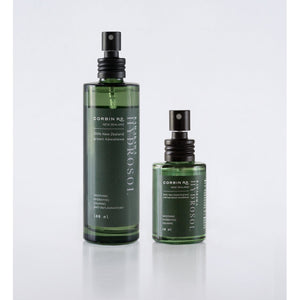Nothing beats a Kiwi summer, but there’s a darker side to enjoying our delicious long days, and slip, slop, slap ‘n’ wrap (and scan) may not be enough to stay safe.
To mark the start of summer this December, Consumer NZ released its findings on its annual sunscreen testing, and the news has angered Kiwis. Five of the 10 sunscreens tested failed in their label claims of Sun Protection Factor (SPF), broad spectrum, or both.
The results have led to calls for mandatory standards under therapeutic claim guidelines, and specified the importance of regular product testing - among those that failed, one brand's product hadn't been tested for around seven years and hadn’t been tested in New Zealand.

Summer comes with a warning
We Kiwis love to stand out from the bunch, but having among the world’s worst rates for skin cancers and death from malignant melanoma is not what we want to be known for.
New Zealanders record a staggering 1,300 new skin cancers each week and five new melanomas every day. Around 300 of us still die each year from malignant melanoma, many of whom are aged between 25 and 44 years old.
Add to that, thanks to our sun-loving nature, two-thirds of New Zealanders are likely to develop non-melanoma skin cancer at some time during our lifetime.

What do I need to know about UltraViolet Radiation - UV
We are exposed to many forms of radiation everywhere and everyday - from our smartphones to televisions and, of course, the sun. Without a doubt the most readily and frequently available source that causes damage to our skin, eyes and overall health is the high frequency and low wavelength range of 100-400nm of UV light radiation from the sun.
The UV region is divided into three bands of sunlight passing through the atmosphere to earth. These are ozone, water vapor, oxygen and carbon dioxide:
- UVA (315-400 nm) - Think A for Ageing: 5-10% absorbed by the atmosphere
- UVB (280-315 nm) - Think B for Burn: 90% absorbed by the atmosphere
- UVC (100-280 nm): 100% absorbed by the atmosphere
How does sun radiation actually damage our skin?
Sunlight is composed of packets called photons. Our skin is the ultimate protector of the body and its internal organs and as such it has a multitude of defence tools at its disposal. One of these is a built in molecule that can absorb the energy packets of both the UVA and UVB photons.
This energises the molecule and, to release this energy, the molecule undergoes a chemical reaction in the skin, which causes a biological consequence. One of those consequences is to produce Vitamin D, which creates strong, healthy bones and elevates mood.
Another reaction to prolonged exposure of UVA radiation however is the production of extra melanin pigment. This we call a sun “tan”, which is actually the skin’s chemical reaction and attempt to protect itself.
Sun exposure also triggers the skin’s antioxidant network to mitigate free radicals that cause cellular damage and oxidative stress. Prolonged or repeated exposure to sun can overload the body’s antioxidant network resulting in cellular damage.
UVA light penetrates deeper into the skin than UVB and is responsible for around 80% of premature ageing from the structural damage of the protein collagen, causing sun spots, papery skin, pigmentation, loss of elasticity, skin firmness and smoothness, etc.
DNA can also absorb both UVA and UVB photons to cause mutations. When this damage is left unrepaired, it may lead to non-melanomas, including basal cell carcinoma, squamous cell carcinoma or melanoma skin cancers.
This is why there is so much emphasis on prevention of over exposure to the sun, and the vigilant promotion to use sunscreens.
What you need to know about Sunscreen
The good news is you can lessen the impact of damage caused by ultraviolet along with blue light rays from smartphones and tablets with filters contained within sunscreens.
We highlight the two main filters below along with a third component that is equally as important when thinking about day-to-day skin protection and long term skin health:
1. SPF protection from Burning
Sun Protection Factor (SPF) indicates how long UVB rays take to cause sunburn. Each factor number therefore indicates how long the protection lasts. In the heat of summer when the sun burn time is around 6 minutes, if an SPF 50 is applied to skin, it provides 50 x 6 minutes of protection, which is around 5 hours.
But that number is not entirely true as it doesn’t account for sweat or swimming, which reduces effectiveness of sunscreen. The advice is to always apply lots and often - at least every two hours - when skin is exposed to the sun, and ideally at least 15 minutes prior to any sun exposure.
2. Broad Spectrum protection from UVA cellular damage
Broad spectrum in sunscreen refers to the sunscreen being able to block both UVA and UVB rays. UVA does the most damage, and while you cannot see or feel it, broad spectrum sun protection is the only option and an absolute must in every sunscreen you use.
The best way to keep skin protected is to apply sunscreen of at least SPF 30 every day (ideally SPF 50), enjoy limited time in the full sun - particularly in the middle of the day - stay covered up when you can by wearing a hat, sun protecting sunglasses, wraps and clothing, and from September through to April use an SPF 50 broad spectrum sunscreen.
3. Antioxidants to support immunity and skin health
Infrared-A and visible light - the blue light emitted from smartphones and tablets - is also associated with causing premature skin ageing. Sun beds and the sun also cause free radical damage to skin.
A sunscreen with antioxidants can help prevent damage to DNA, skin cells and support the body's natural immune response. Using a sunscreen that has both protecting qualities and those all important antioxidants is the best way to maintain and preserve skin health over time.

What's in my sunscreen?
Let’s take a deeper dive into what you need to know about sunscreen so you can make the right decision for you and your family so you stay protected all year long.
There are three types of sunscreen that contain filters and these either absorb or reflect sunscreen. They are chemical, mineral, or a combination of both.
Before you make your choice about what you apply on your skin, it may be helpful to know the difference so you make the best decision applicable for each occasion - after all for a swim at the beach or lunch at a winery you may prefer different options.
How does chemical sunscreen work?
Chemical sunscreen filters provide a chemical barrier on the skin's surface between the sun's rays and your skin. Multiple chemical ingredients activate in combination and work better to cover the range of wavelengths to absorb harmful UV photons from the sun before they cause any damage to skin.
What happens to this energy absorbed by the molecules in the chemical barrier?
Some time after light is absorbed, the electron will fall back down to a lower energy state. This releases the energy which is re-emitted as a photon or group of photons, often of lower energy. After this happens, the electron is free to absorb a new photon of light.
The benefit of using chemical barriers is they rub into skin easily and quickly, and they don’t whiten the skin. Many spray-on sunscreens are chemical sunscreens, particularly those used in products aimed at children.
Chemical ingredients include active ingredients in combinations of up to six of the following: oxybenzone, avobenzone, octisalate, octocrylene, homosalate and octinoxate (octyl methoxycinnamate).
How does mineral sunscreen work?
Mineral sunscreen filters provide a physical barrier on the skin's surface between the sun's rays and your skin. It works by reflecting harmful UV rays away from the skin.
These sunscreens are naturally thicker than chemical sunscreens but do rub into skin for a full coverage. Some may appear whiter on the skin after application due to their barrier reflecting ingredients.
Popular and FDA-approved mineral sunscreen ingredients are zinc oxide and titanium dioxide.
Mineral sunscreen is the most effective barrier against sun for prolonged use both throughout the day and over every day of the year.
Some sunscreens combine both chemical and mineral filters.

Whichever sunscreen or mix of sunscreens you choose for you and your family this summer, versatility and efficacy are key. Ensure it doesn't cause breakouts, offers full coverage, doesn't whiten skin when you don't want it to, is ideal for daily wear, delivers on its SPF promise and is broad spectrum.
For excellent advice and information about sunscreen, ingredients, skin cancer and melanoma go to:





